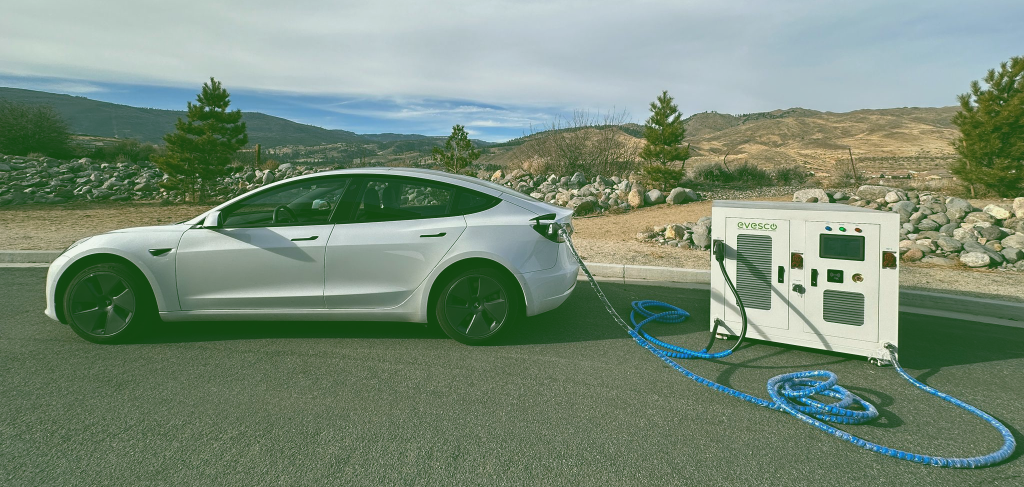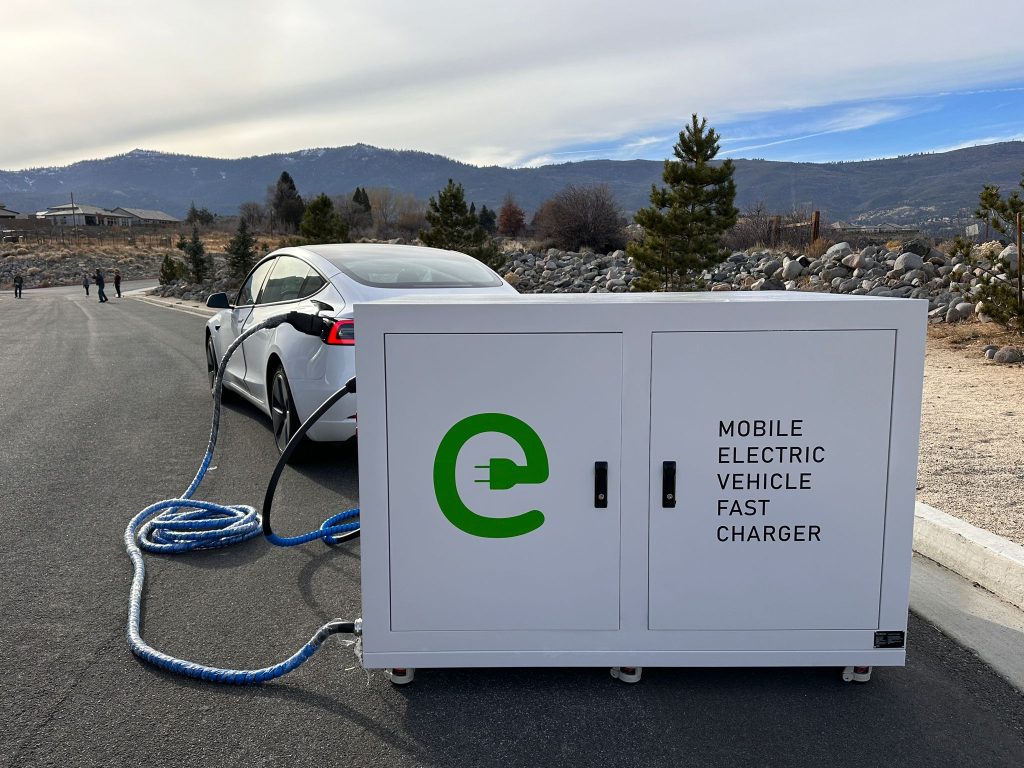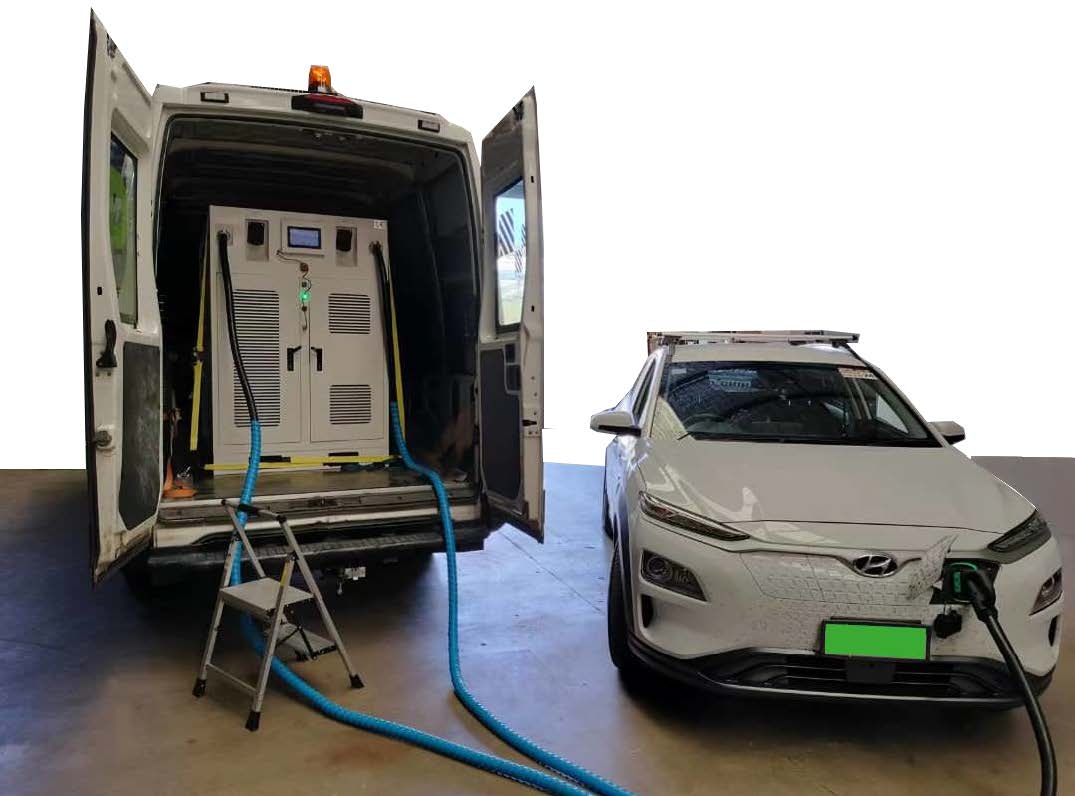How to Start a Mobile EV Charging Business

In today’s world, where sustainable solutions are imperative, the Electric Vehicle (EV) market is experiencing extraordinary growth, with an estimated 16.7 million electric cars to be sold in 2024. This growth is driven by a global shift towards green energy, technological advancements, and supportive government policies. With strong environmental awareness and government backing, the European market is a leader in EV innovation and adoption. Meanwhile, North America’s growth is fueled by government and private sector initiatives, offering a diverse range of EV models and a growing consciousness of environmental issues. Nevertheless, the most significant potential lies in developing regions, where the EV market, still in its infancy, offers vast opportunities for early investment, particularly in mobile EV charging solutions.
The need for mobile EV charging arises from the current infrastructure’s inability to meet the growing demand for EVs. These mobile charging services, offering convenience and accessibility, fill the gaps left by stationary charging points and are crucial for fleet operators and in disaster response scenarios, ensuring operational efficiency and continuous service.
Mobile EV Charging Service Business Models
Selecting a suitable business model is crucial in the mobile EV charging market. This section explores a range of models, each offering unique advantages and challenges. From on-demand services to subscription plans, we provide insights to help you align your strategy with market trends and business objectives.
On-Demand Mobile EV Charging
Specifically, this model involves providing immediate charging services to stranded EVs. In other words, it’s comparable to a roadside assistance service but for EV charging. Consequently, this service is beneficial in areas where charging stations are sparse.
- Market Insight:
- Europe and North America: High potential due to increasing EV adoption and the occasional gap in charging infrastructure.
- Developing Regions: This service is essential given the less-developed EV infrastructure. However, operational logistics and lower EV penetration could pose challenges.
Subscription-Based Mobile Charging
Customers pay a fixed monthly fee for regular charging services. These services can include scheduled home charging or access to exclusive mobile charging points. This model is considered a “charging-as-a-service.”
- Market Insight:
- Europe and North America: Attractive for EV owners who prefer predictable costs and convenience. Well-suited to regions with higher income levels and regular commuting patterns.
- Developing Regions: May face challenges due to variability in income levels and EV usage patterns. However, it can be attractive for middle and upper-class segments in urban areas.
Corporate Partnerships
Partnering with businesses to provide charging services for their electric vehicle fleets or customers, like installing charging stations at corporate offices or mobile EV charging services for auto dealership customers.
- Market Insight:
- Europe and North America: These regions are highly viable due to the increasing number of corporate fleets transitioning to EVs and businesses looking to attract eco-conscious customers.
- Developing Regions: Potential is tied to the growth of corporate sectors and their adoption of EV fleets. This model is more likely to succeed in economically robust areas.
Event-Based EV Charging
For example, offering mobile EV chargers at events or high-demand locations such as festivals, sports events, and large public gatherings, or alternatively, providing temporary charging services during peak demand periods such as highways during holiday seasons.
- Market Insight:
- Europe and North America: There is great potential, especially in urban areas with a high frequency of events and a culture of public gatherings.
- Developing Regions: Opportunities may be seasonal and linked to popular events. They are most effective in urban centers where events are more common.
Hire/Rental of Mobile EV Chargers
The hiring or renting out of mobile EV charging systems to customers for temporary usage. It is ideal for construction sites, temporary events, or before installing permanent EV charging equipment.
- Market Insight:
- Europe and North America: These regions have high potential due to the diversity of use cases, from construction sites to temporary exhibitions or emergency backup.
- Developing Regions: This can be a lucrative option where permanent infrastructure is lacking or infeasible, serving as an interim solution for various needs.

Comparing Business Models
| Factor | Comparative Analysis |
| Scalability | The On-Demand and Subscription-Based models are highly scalable in developed markets but may require more investment in logistics and technology. The Hire/Rental model is also scalable with careful inventory management. |
| Market Reach | Corporate Partnership and Event-Based Charging have the potential to reach a broad audience quickly, leveraging existing gatherings or corporate networks. |
| Revenue Predictability | Subscription-Based and Corporate Partnership models offer more predictable revenue streams due to their structure. |
| Initial Investment | Event-Based Charging and Hire/Rental models may require lower initial investments than setting up an extensive On-Demand service network. |
| Flexibility | The Hire/Rental model offers high flexibility to cater to varied customer needs, from individual to commercial use. |
| Market Sensitivity | Models like On-Demand and Subscription-Based services are more sensitive to the existing EV infrastructure and consumer behavior in different regions. |
In the dynamic landscape of the EV charging industry, a hybrid approach, blending different business models, can be a pathway to success. Combining elements of on-demand services, subscription plans, and corporate partnerships can cater to a broader range of customer needs and market sectors and adapt to each model’s unique opportunities and challenges. Entrepreneurs should carefully balance these considerations with their business objectives and resources. By understanding market characteristics, consumer behavior, and regional infrastructure, they can create a business model that is not only flexible but also finely tuned to meet the specific demands of their mobile EV charging venture.
Mobile EV Charger Types
Firstly, various types of charging stations offer unique capabilities and benefits. In this context, this section introduces and compares mobile charging solutions, from battery-powered and generator-powered units to those that integrate renewable energy. Ultimately, understanding these options is crucial in determining which type aligns best with your business objectives and customer needs, thereby positioning your EV charging business effectively in the market.
Battery-Powered Mobile EV Chargers
Specifically, battery-powered mobile EV chargers are all-in-one systems that combine EV charging with advanced battery technology, enabling true off-grid mobile charging capabilities. Consequently, these self-contained units are designed to provide autonomous power support for electric vehicles, making them ideal for areas without established charging infrastructure. Furthermore, their portability and ease of deployment allow for versatile use, from emergency roadside assistance to event-based charging services. Ultimately, they are crucial in ensuring continuous mobility for EV users, particularly in remote or underserved locations.
- Advantages:
- Portability: They are often compact and can be easily transported to different locations by integrating within a vehicle or on a trailer.
- Ease of Use: Simple to operate and can be deployed quickly without extensive setup.
- Charging Flexibility: Multi-protocol systems can charge almost any electric vehicle with CCS, CHAdeMO, GB/T, NACS, Type 1, and Type 2 connectors.
- Fast Charging: DC fast charger output from 30 kW to 360 kW +. Time is money; the quicker you charge, the more customers you can service.
- Environmentally Friendly: They emit no pollutants during operation, aligning with the eco-friendly ethos of EVs.
- Renewable Integration: Can be integrated with renewable energy sources such as solar and wind for additional energy utilization.
- Limitations:
- Limited Energy Capacity: They can only store a finite amount of energy, requiring regular recharging. Movable EV charging systems with batteries can be recharged via the grid or a fast charger.
- Upfront Cost: High-capacity battery systems can be expensive.
- Weight: The unit’s weight needs to be considered if transporting via a vehicle. The higher the energy capacity, the heavier the unit will be.
- Intermittent Renewables: The renewable power supply can be inconsistent dependent on weather conditions.

Mobile EV Charger with Generator
These systems use stationary or portable EV charging stations combined with conventional generators or more environmentally friendly options like fuel cells.
- Suitability and Environmental Impact:
- Conventional Generators: Offer a reliable power source with the downside of emissions and noise.
- Greener Generators: Utilize biofuels or hydrogen fuel cells, reducing environmental impact while maintaining efficiency.
- Fuel Cells: Provide a cleaner alternative with higher energy density, but can be costly and require specific fueling infrastructure.
- Limitations:
- Noise and Air Pollution: Conventional generators often produce significant noise and exhaust emissions, which can be a concern in urban or environmentally sensitive areas.
- Operational Costs: Fuel costs can be high, especially over extended periods of use, impacting overall operational efficiency.
- Maintenance and Reliability: Generators, particularly those running on fossil fuels, require regular maintenance and are subject to wear and tear, potentially affecting reliability.
- Footprint: Larger generators may require more space for operation and storage, posing challenges in dense urban environments or at events with limited space.

Firstly, understanding the variety of mobile EV charging solutions is pivotal. Specifically, each type of charging station, from battery-powered and generator-powered units to those integrating renewable energy sources, presents unique capabilities and benefits. Finally, this section has explored these options, thereby helping you determine the most suitable choice for your business objectives and customer needs.
In particular, battery-powered mobile chargers stand out for their all-in-one design, offering true off-grid charging capabilities. Consequently, they excel in areas lacking established infrastructure, with their portability and environmental friendliness making them a prime choice for various applications. Nevertheless, considerations like energy capacity, upfront costs, and weight must be factored in.
Sizing a Battery-Powered Mobile EV Charger
When sizing a battery-powered mobile EV charger, it’s crucial to match its capacity and power output to its intended use, especially for emergency recovery. Unlike full charging, the goal in such scenarios is to provide just enough power for the vehicle to reach the nearest charging station—similar to how roadside assistance provides enough fuel to reach a gas station.
A recovery charge typically adds 25–40 miles of range, roughly 8–10 kWh. For example, a 60 kWh mobile charger at full DoD can service about 5–6 vehicles per charge. This highlights that mobile EV chargers are designed for quick interim boosts, not full charges.
Additionally, considering EV driver habits and battery health—keeping charges between 20–80%—informs realistic energy needs. Average fast-charging sessions use 22 kWh in the U.S. and 25 kWh in Europe, guiding effective sizing and deployment of mobile charging units like those from EVESCO.
Market Assessment and Strategy Development
In the dynamic and rapidly evolving field of mobile EV charging, conducting a thorough market assessment and developing a robust strategy are fundamental to success. This critical process involves a deep dive into market trends, customer identification, and competitive landscapes. It’s crucial to analyze current market conditions and anticipate future shifts. Understanding your target audience’s needs, preferences, and pain points, along with a comprehensive competitor analysis, forms the backbone of a strategic plan.
| Assessment Component | Key Element 1 | Key Element 2 | Key Element 3 | Key Element 4 |
| Analyzing Market Demand in Different Regions | Research Local EV Trends: Understand your target regions’ current and projected EV adoption rates. | Infrastructure Analysis: Assess the availability and spread of existing EV charging stations. | Regulatory Environment: Identify regulations and incentives related to EVs and charging services. | Cultural Factors: Consider how cultural attitudes towards sustainability and technology adoption might influence market demand. |
| Identifying Customer Segments | Individual EV Owners: Understand their charging habits, preferences, and pain points. | Event Organizers: Identify opportunities for mobile charging services at events, such as exhibitions, festivals, or sports events. | Corporate Fleets: Engage with businesses that have or are planning to have EV fleets. Assess their specific needs for fleet management and charging solutions. | Other Niche Markets: Consider other potential customers like taxi services, car rental companies, or municipalities. |
| Competitor Analysis | Identify Existing Providers: Research your target market’s existing mobile charging businesses and other EV charging solutions. | Analyze their Offerings: Understand their service models, pricing, technology, and customer feedback. | Identify Gaps: Look for service gaps or unmet needs in the current market. | Benchmark Performance: Evaluate how competitors’ services perform in terms of efficiency, reliability, and customer satisfaction. |
| SWOT Analysis for Your Business | Strengths: Assess your unique selling points, such as advanced technology, strategic partnerships, or superior customer service. | Weaknesses: Identify potential challenges, like resource limitations, lack of brand recognition, or technological constraints. | Opportunities: Look for market trends, regulatory changes, or technological advancements you can leverage. | Threats: Consider external factors like competitive pressure, market saturation, or economic downturns. |
| Articulating a Strong Company Vision and Strategy | Define Your Vision: Clearly state your long-term vision and what you aim to achieve in the mobile EV charging space. | Develop Strategic Goals: Set specific, measurable, achievable, and time-bound goals that align with your vision. | Create a Roadmap: Outline the steps and timelines to achieve your goals, including technology development, market-entry, and scaling operations. | Communicate and Adapt: Ensure your team understands and is aligned with the vision and strategy. Be prepared to adapt as you gather more market insights and feedback. |
| Targeting Customers and Marketing Strategies | Develop Customer Personas: Create profiles for potential customers in different markets, considering their specific characteristics and needs. | Effective Marketing Channels: Utilize a blend of online platforms, social media, and B2B networking to reach and engage diverse customer segments. | Build Partnerships and Collaborations: Forge strategic alliances with businesses and industry players to expand market reach and enhance service offerings. | Cultural and Regulatory Considerations: Tailor marketing strategies to suit each target market’s cultural norms and regulatory environments. |
Operational Considerations for a Mobile Charging Business
First, efficient logistics are crucial for the success of a mobile EV charging business, requiring a strategic plan for unit deployment, regular maintenance, and effective management. For instance, strategically deploy mobile charging units based on electric vehicle density, road accessibility, and demand patterns, while also maintaining them through routine checks and updates. Additionally, consider utilizing logistic management software for tracking and route optimization. Furthermore, emphasize technology in service management, with intuitive software for booking and dispatch, a user-friendly interface for customers, and data analytics to gauge service patterns and preferences. Importantly, safety and compliance are paramount; establish stringent safety protocols and stay abreast of regulations to ensure your service is both efficient and compliant. Overall, these are key areas to consider when establishing a reliable and sustainable mobile EV charging service.
Funding and Financial Planning
First, a thorough understanding of startup costs is essential for the successful launch and growth of a mobile EV charging business. Specifically, initial investments include equipment expenses, such as mobile charging units, transport vehicles, and recharging technology. Next, operational costs, including staffing, maintenance, logistics, and utilities, form the core of ongoing expenses. Moreover, allocating a budget for marketing and sales activities is crucial for building brand presence and acquiring customers. Equally important, financial planning involves detailed budgeting to track all expected expenses and revenues, forecasting to project financial health over time, and conducting break-even analysis to determine when the business will become profitable. Ultimately, this approach, underlined by a clear understanding of costs and planning, is pivotal in steering a mobile EV charging business toward long-term success and sustainability. Below, a table highlights some of the funding options to consider.
| Funding Option | Description |
| Traditional Bank Loans | A conventional option, bank loans can provide straightforward funding, subject to financial assessments and repayment agreements. |
| Angel Investors | Engage with individuals who have an interest in green technology and sustainable ventures. Angel investors not only bring capital but also valuable expertise and connections. |
| Venture Capital (VC) | Suitable for businesses poised for rapid growth. VC firms provide significant funds, often in exchange for equity and a role in business decisions. |
| Crowd Funding | Utilize crowdfunding platforms to gather funds from a broad audience, offering them early access to services or a stake in the business. |
| Government Grants and Loans | Explore financial support from government entities dedicated to promoting green initiatives and technological innovation. |
| Leasing Options | Consider leasing equipment and technology needed for your operations. This can lower upfront costs, offer flexibility, and include maintenance and upgrades in the lease agreement. |
| Incentive Programs | Take advantage of EV charging incentive programs to reduce initial investment and operational expenses. |
Scaling the Business
To effectively scale, a mobile EV charging business should enhance service offerings, like faster charging options and broader service areas, while simultaneously building strong customer relationships through exceptional service and engagement programs. Additionally, forming strategic partnerships and collaborations with EV manufacturers, large fleet operators, and local entities can significantly extend market reach. Finally, a gradual rollout, starting small and expanding based on feedback, is effective for market penetration.
Actionable Steps to Start a Mobile EV Charging Business
- Market Research: Conduct research to understand the local EV market, customer needs, and competition.
- Develop a Business Plan: Outline your business model, operational strategy, financial planning, and growth plans.
- Acquire Funding: Explore and secure funding through avenues like angel investors, VC funding, government grants, or crowdfunding.
- Procure Equipment: Contact companies like EVESCO for information to evaluate battery-powered mobile EV charging systems, and evaluate different equipment options.
- Set Up Operations: Organize the logistics, staff, technology, and safety protocols for your mobile charging units.
- Launch Marketing Efforts: Develop a marketing strategy to promote your services and build customer relationships.
- Start Small and Scale: Begin operations on a small scale to test the market, and gradually expand based on demand and feedback.
- Monitor and Adapt: Continuously monitor your business performance and be adaptable to changing market needs and technological advancements.
Ultimately, launching a mobile EV charging service is not just about starting a business; it’s about being at the forefront of the electrification of transportation. In doing so, your venture plays a crucial role in supporting the growth of the EV market, contributing to environmental sustainability, and meeting the evolving needs of a more eco-conscious society.



